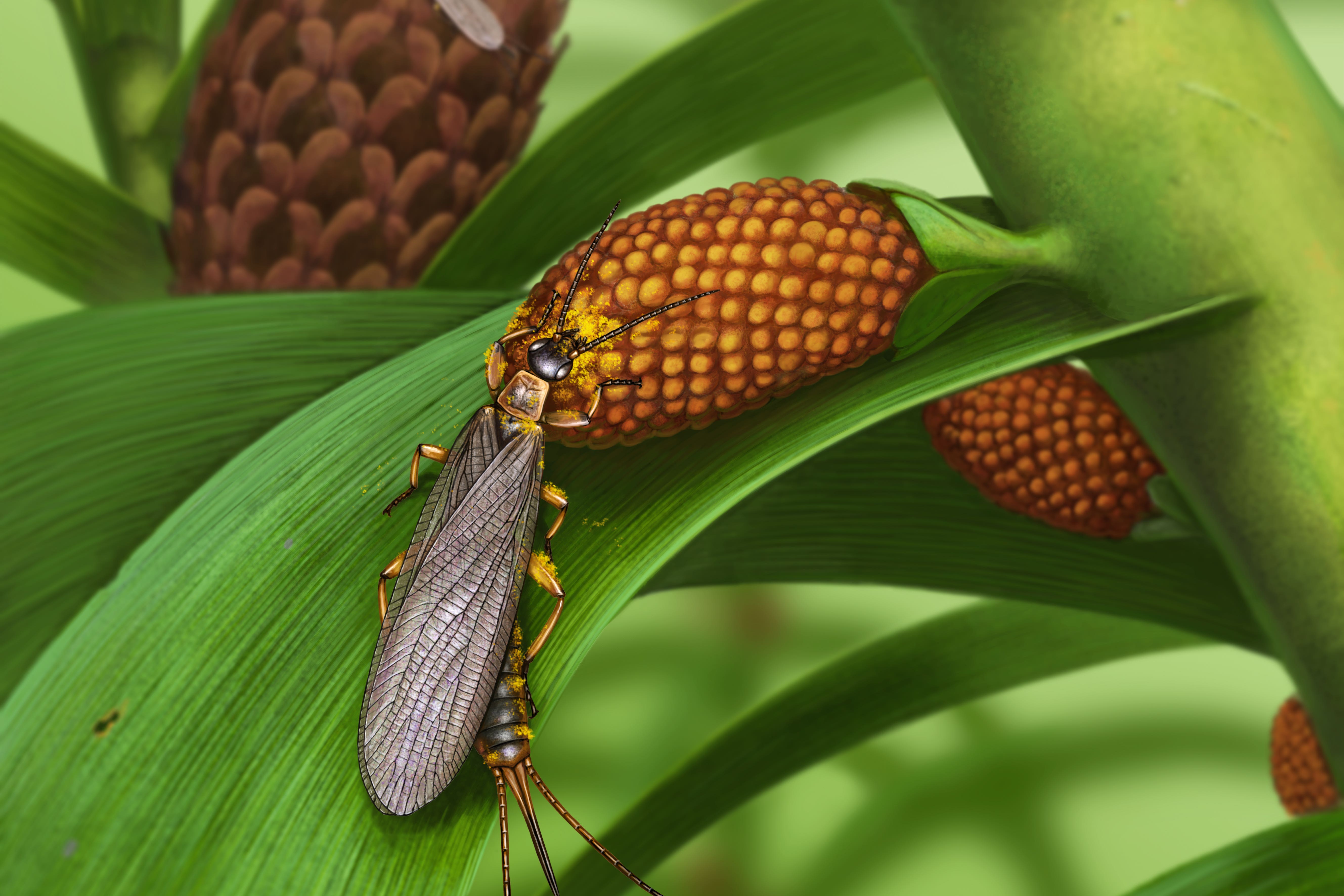Scientists uncover earliest insects covered in pollen from 280 million years ago
Researchers say these ancient insects, known as tillyardembiids, could be seen as a precursor to insect pollination.

Your support helps us to tell the story
From reproductive rights to climate change to Big Tech, The Independent is on the ground when the story is developing. Whether it's investigating the financials of Elon Musk's pro-Trump PAC or producing our latest documentary, 'The A Word', which shines a light on the American women fighting for reproductive rights, we know how important it is to parse out the facts from the messaging.
At such a critical moment in US history, we need reporters on the ground. Your donation allows us to keep sending journalists to speak to both sides of the story.
The Independent is trusted by Americans across the entire political spectrum. And unlike many other quality news outlets, we choose not to lock Americans out of our reporting and analysis with paywalls. We believe quality journalism should be available to everyone, paid for by those who can afford it.
Your support makes all the difference.Scientists believe they have uncovered the earliest insects to be covered in pollen, dating back to around 280 million years ago.
Palaeontologists in Russia discovered fossil remains of ancient earwig-like insects, known as tillyardembiids, in a lagoon near the village of Chekarda, about 1,600km from Moscow.
These tillyardembiids, which hail from the Paleozoic era from around 542 to 250 million years ago, were found covered in pollen from seed-producing, non-flowering plants known as gymnosperms.
This was long before flowering plants became more common, sometime between 100 to 50 million years ago.
The scientists said their findings, published in the journal Biology Letters, predate the earliest known pollen-covered insects by 120 million years.
They also believe the behaviour of these tillyardembiids could be seen as a precursor to insect pollination.
Dr Alexander Khramov, a senior researcher at the Paleontological Institute, Russian Academy of Science in Moscow, told the PA news agency: “Our discovery sheds light on the early evolution of insect pollination.
“It provides direct, smoking-gun evidence of pollen dispersion by Paleozoic insects.”
Dr Khramov and his colleagues found a handful of extinct tillyardembiids with pollen preserved on their heads, thoraces, legs and abdomens.
He said fossils such as these are rare to find.
Dr Khramov told PA: “To uncover them (the tillyardembiids), palaeontologists like me split the rock with a hammer.
“The insect-bearing rocks of Chekarda were deposited at the bottom of an ancient lagoon about 280 million years ago, in the early Permian period (the last period of the Paleozoic era).
“This was a time when ambers with insect inclusions did not exist.
“It was really unexpected to discover that pollen could be preserved on body surfaces of Paleozoic insects flattened in the rock.”
What we could say for sure is that tillyardembiids visited quite a narrow range of plants and carried their pollen in large amounts. So I do not see why they could not have been pollinators
The researchers said that judging by the pollen composition, the tillyardembiids only ever visited a narrow range of host plants.
While recent fossil discoveries suggest insect pollinators and gymnosperms may have co-evolved – long before the appearance of flowering plants – the experts said it is impossible to say for certain whether tillyardembiids were pollen consumers or contributed to pollination.
Dr Khramov said: “Tillyardembiids had wings, so they could disperse pollen more effectively.
“We cannot go back in a time machine to observe whether these insects did pollination work or not.
“Even if they pollinated ancient gymnosperms all day round, there are no ways to prove it with certainty by means of palaeontology.
“Who knows, maybe they simply gobbled up pollen, and plants did not benefit from it?
“Anyway, what we could say for sure is that tillyardembiids visited quite a narrow range of plants and carried their pollen in large amounts.
“So I do not see why they could not have been pollinators.”